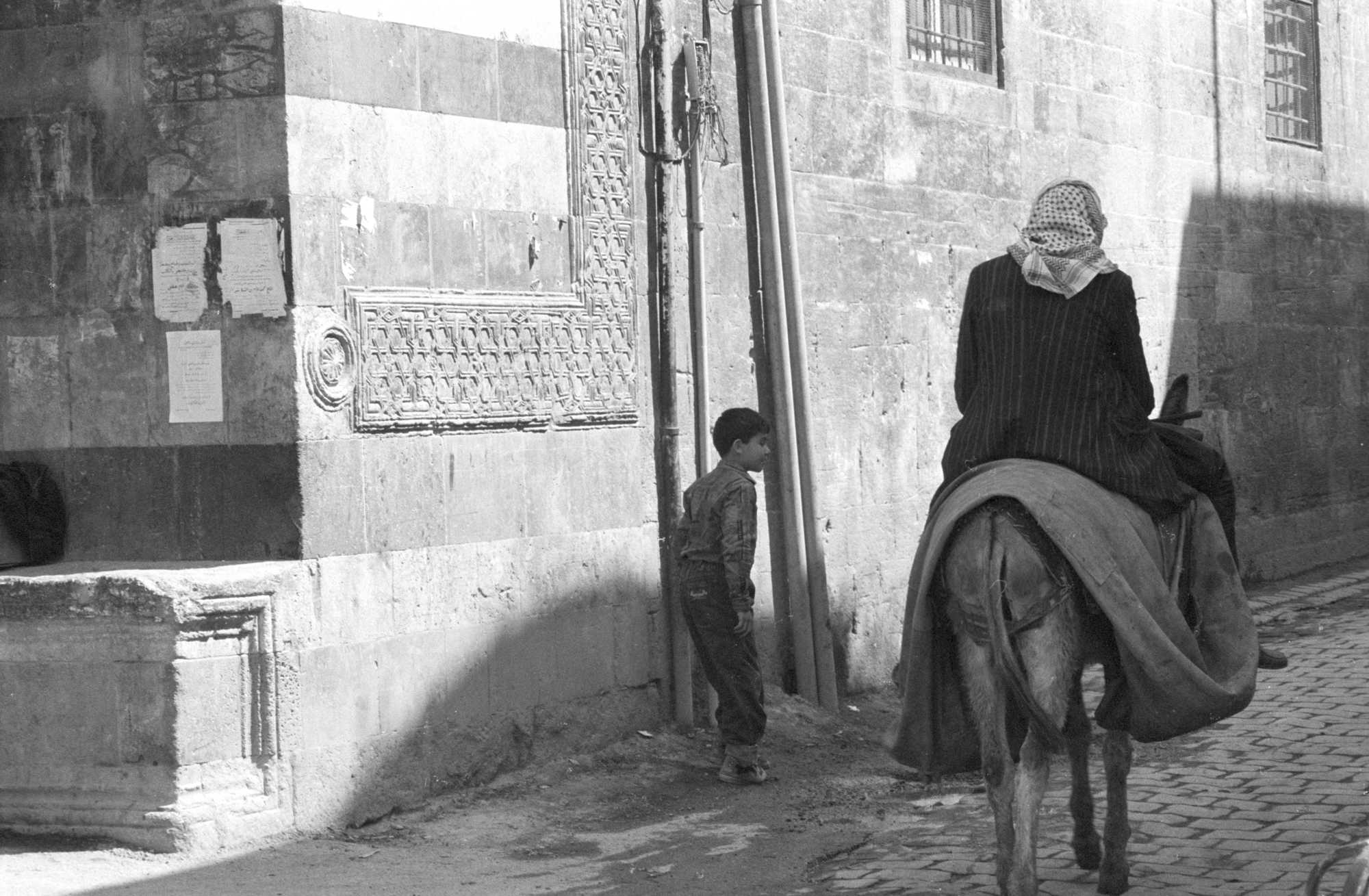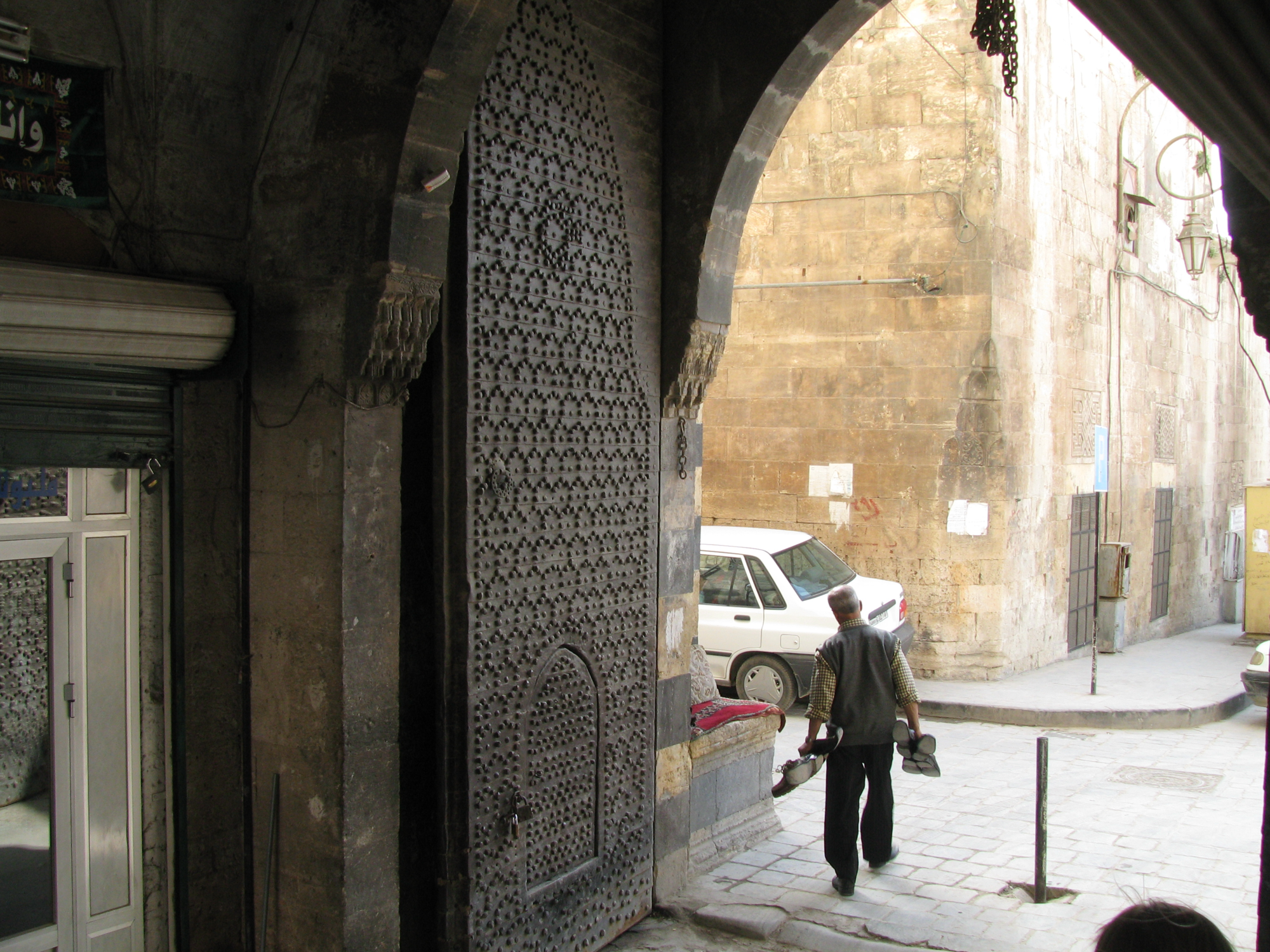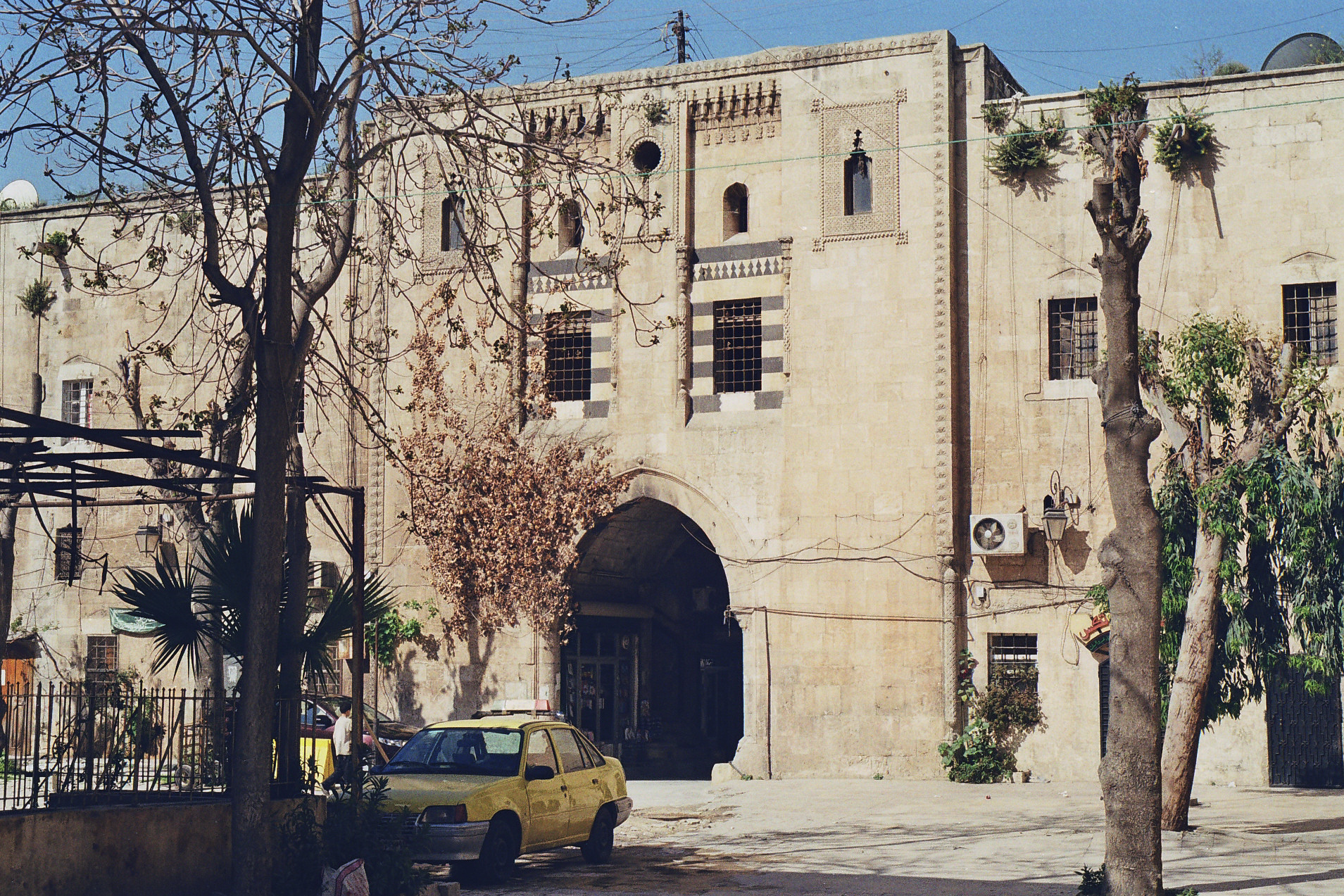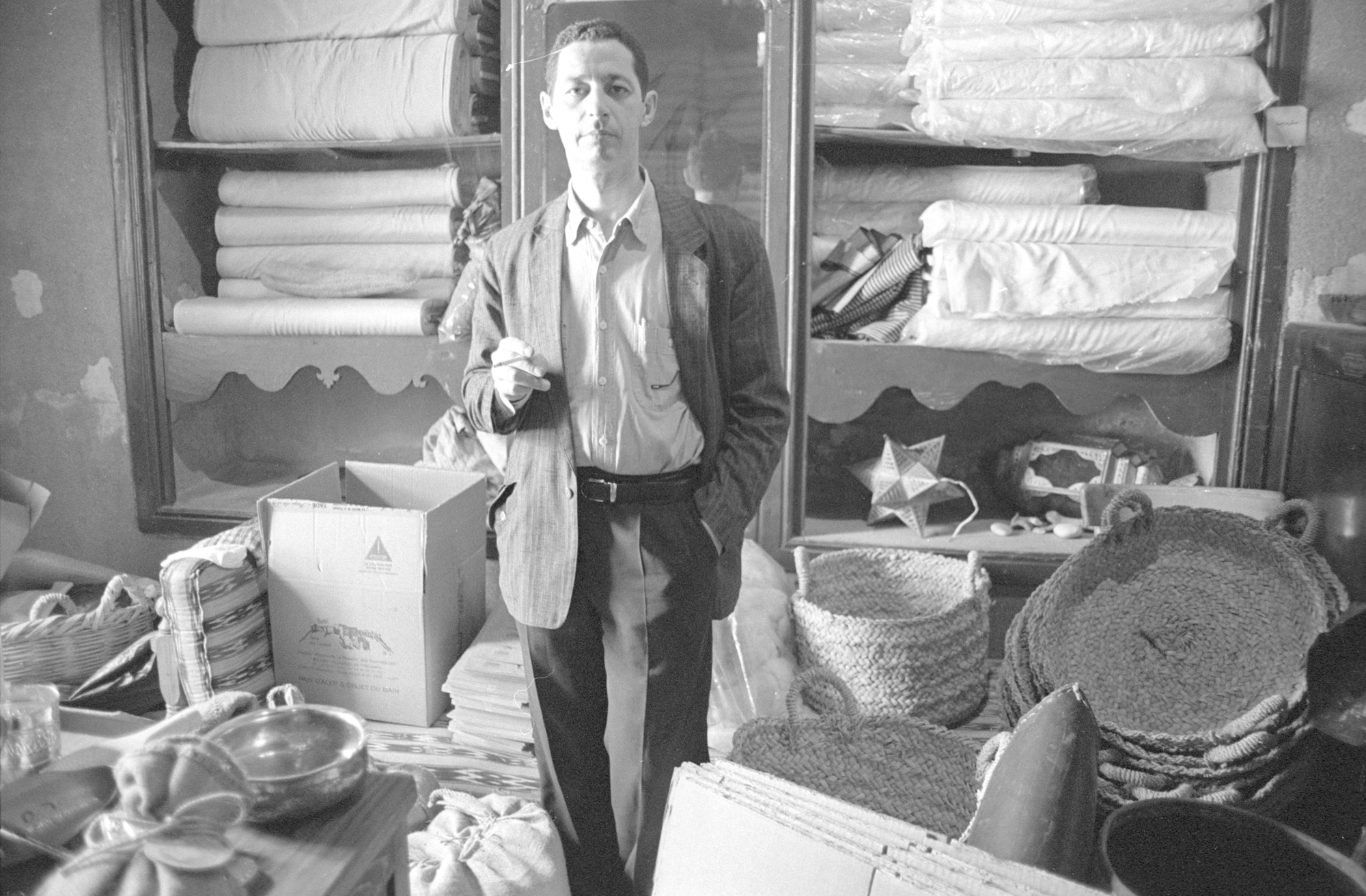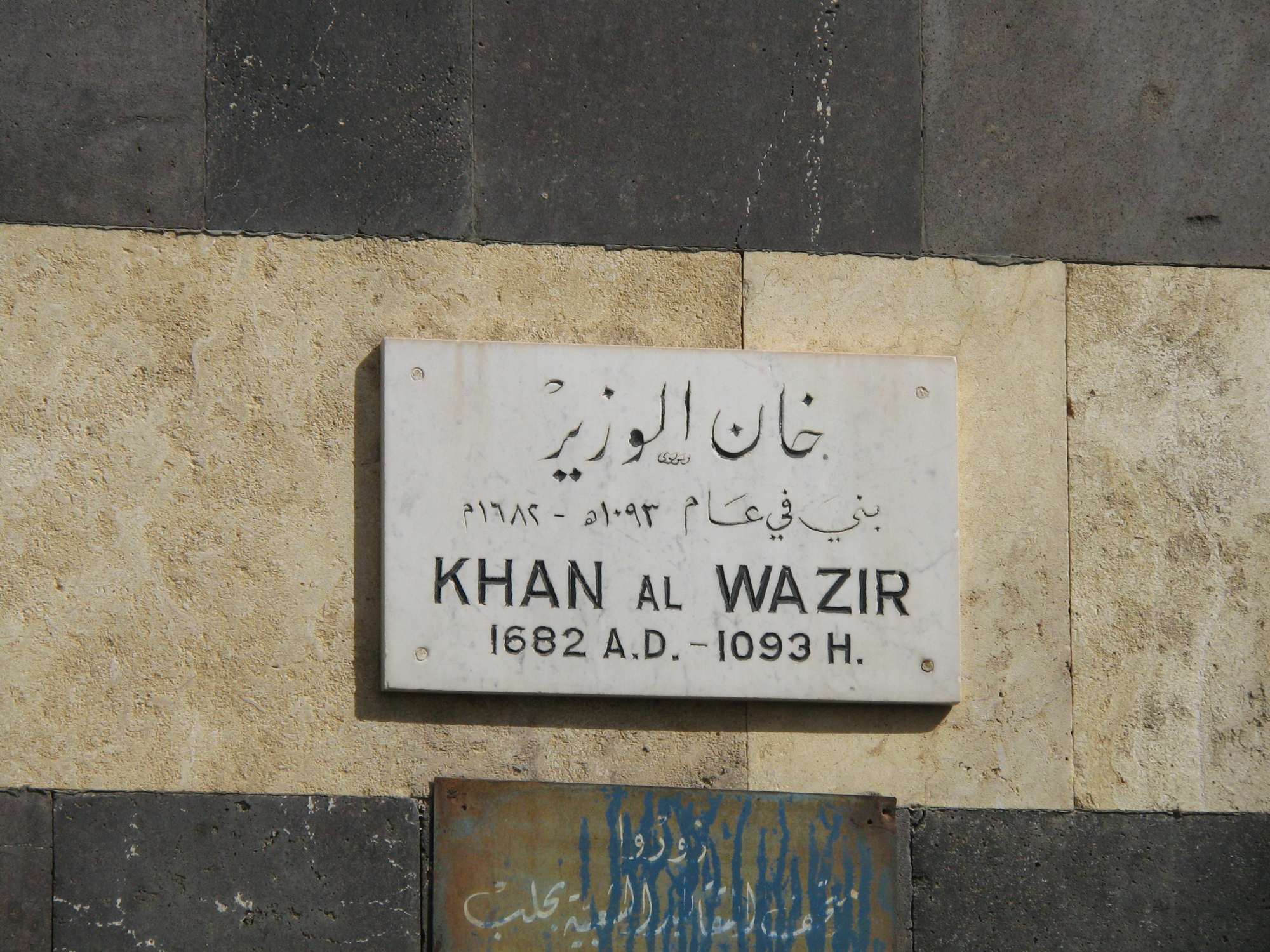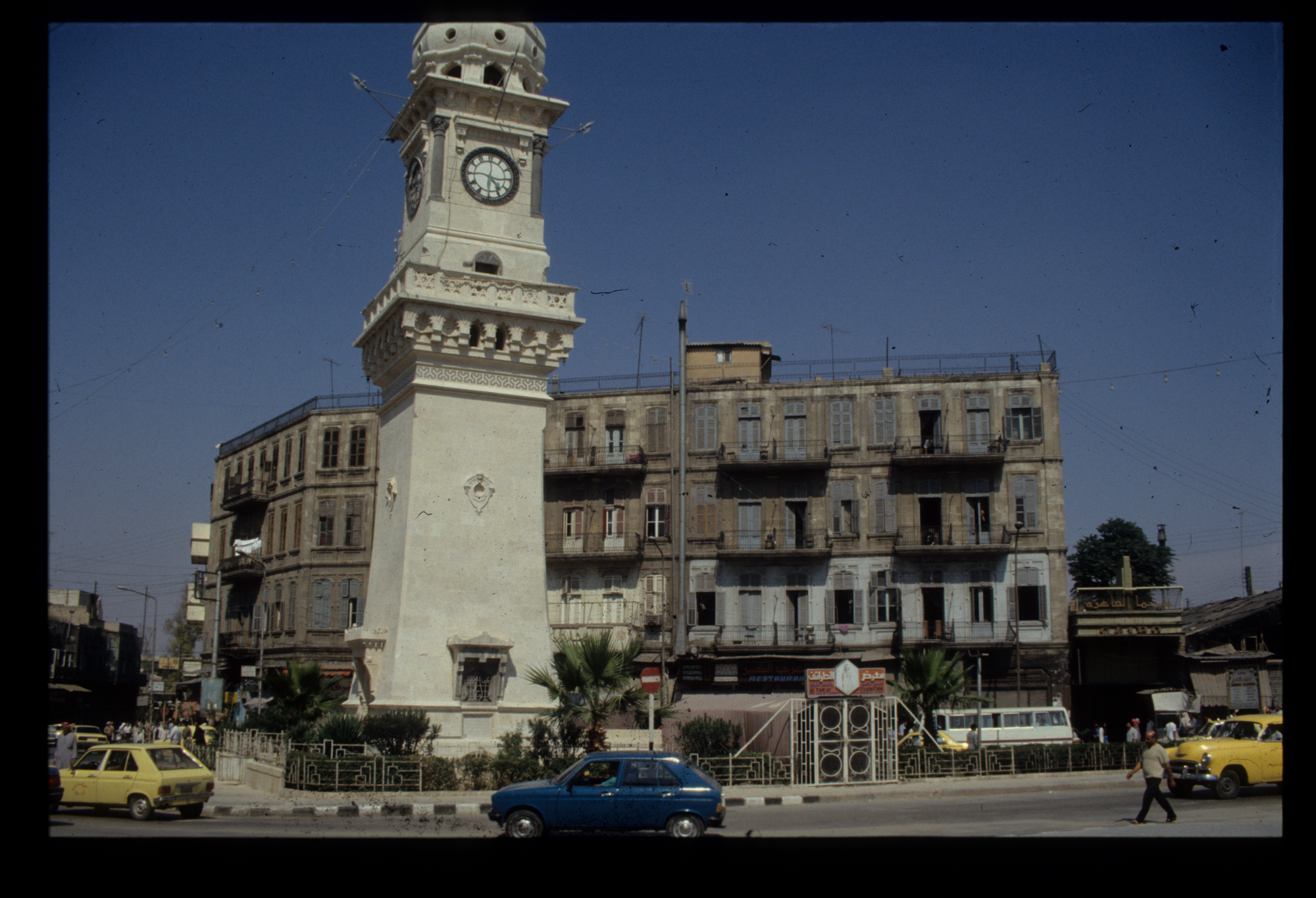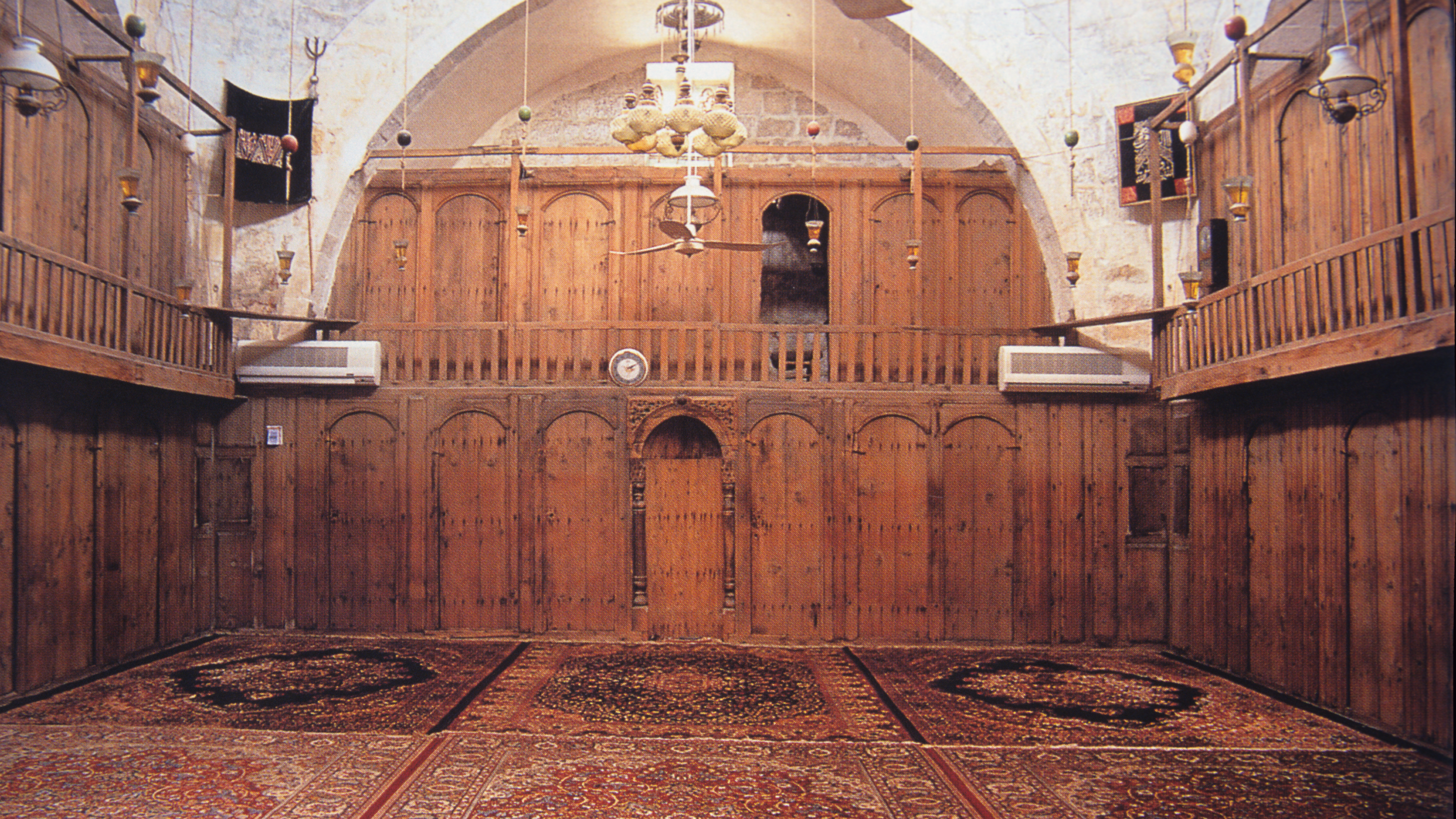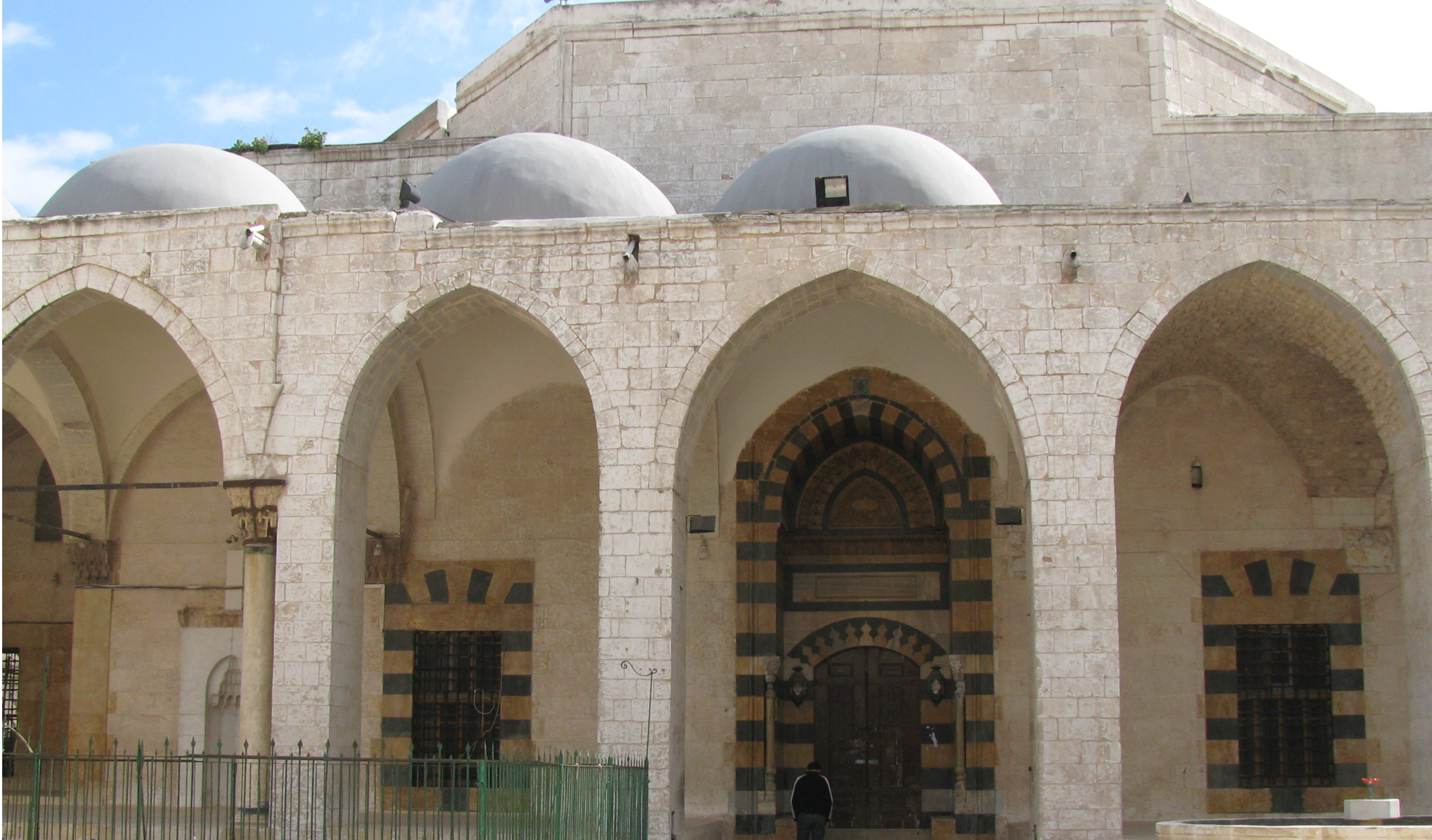About the Series
In this series we display personal stories of places (historical monuments) in Aleppo city, told by people who had a special bond with the place. The aim of this series is to highlight the intangible aspect of heritage places in Aleppo, and to communicate the inclusion of memory in reimagining and rebuilding a place through its people.
These contributions are part of the joint efforts of the Interactive Heritage Map of Syria Project along with the Aleppo Heritage Catalogue Project, which seeks to document the history and architecture of historical monuments in the city of Aleppo.
Khan al-Wazir, a historic trading center in Aleppo, has witnessed the flourishing of textile industry and family legacy. However, due to the war, the Khan is now abandoned and in a bad condition. This memory is a personal journey through Khan al-Wazir, Aleppo, of a textile merchant who grew up and worked in the historic trading center. It explores Paul’s memories and experiences of the Khan, and their hopes for its future restoration.
Footsteps of the Past
As a child, Paul used to accompany his father to his office and factory in Khan al-Wazir. They would walk to work and stop by the Bab al-Faraj post office to grab their letters before continuing their journey by tram or walking. The factory was relocated several times within the Khan itself, with Paul sharing memories of the northern part of the Khan that was later demolished to widen the street leading to the citadel.
"My father had an office and a factory in Khan al-Wazir...
...where I used to accompany him to as a child. On our daily walk to work, we would always go to Bab al-Faraj post office to open our mailbox, grab the letters and continue the way by tram or walking until we arrived at Khan al-Wazir.
Our factory was relocated several times within the Khan itself. I remember in the beginning, the factory used to be positioned in the northern part; now demolished to widen the street leading from the Umayyad mosque to the citadel. It is told that the former alley used to be so narrow that you could touch both sides of its walls with your hands as you walked. And so, parts of the Khan and a large portion of the opposite building (Matbakh al-Ajami) were demolished in order to facilitate the accessibility to some houses.
After the acquisition of our shops in Khan al-Wazir, we received a small government compensation and moved to the khan’s salon; a very good large square hall located just above the entrance. We went up from one of the two parallel stairs, one on each side of the Khan. We continued our work in this salon for about a year and a half before we moved to the western facade where I am still today."
The Textile Industry in Khan al-Wazir: Atlas Megarbane Satin
Paul’s family practiced general trade in Khan al-Wazir, with a special focus on the textile industry. They were known for their products made of Atlas Megarbane Satin, a high-quality fabric that was particularly popular for bridal apparel in Aleppo. Paul shares memories of visiting his father and uncle's small textile factory.
"I have many beautiful memories in this Khan visiting the small textile factory, which used to belong to my father and uncle. They had two of the first weaving looms in Aleppo, with a license to practice this profession in the Khan despite the looms’ loud noise. I can still hear the looms’ sound in my head today! How I could tell whether they were working or not even while sitting away in the office.
Our family products were well known as Atlas (Satin weave) Megarbane. In Aleppo, the bride’s apparel usually included garments made of famous Megarbane’s satin, because of its soft and robust quality. In addition to the textile industry we practiced general trade. My grandfather sold goods from satin and cotton fabric, of which a large sum was being exported to Mosul, Iraq."
Craftsmanship in Textile Production: Weaving Looms and Qaysariyyas
Paul reflects on the craftsmanship involved in textile production, particularly the use of weaving looms and qaysariyyas in Khan al-Wazir. As demand for their products increased, Paul's family distributed their workload to some qaysariyyas that had looms in them to increase production.
"One of my distant memories is when the demand for our products increased...
...and we were distributing our load of work to some qaysariyyas that have looms in them, to increase our production. There is a special craftsmanship to work on the loom where the worker sits in front of his tools and puts his feet in a hole underneath to lift and lower the strands using his hands to alternate between left and right in order to weave.
Many things have changed in front of the Khan, including the demolition of al-qaysariyya in front of the entrance and the closure of the water well beside the entrance. There was a water tank opening near the door of our factory that was also closed."
Preserving Heritage and Fostering Cultural Exchange: Khan al-Wazir as a Swiss Consulate and Cultural Center
In recent years, Paul’s office in Khan al-Wazir served as the Swiss consulate. Paul describes the huge open courtyard in front of the consulate, which could comfortably seat up to 600 people, and the beautiful concert held by a music band from Switzerland.
"My office served as the Swiss consulate. In 2008 & 2009 I organised Syrian-Swiss events and festivals sponsored by Aleppo’s Governorate and the Swiss Embassy in Damascus, such as fashion shows, exhibitions, cultural and artistic gatherings. There is a huge open courtyard in front of the consulate, in which up to 600 people can sit comfortably. A music band from Switzerland held a beautiful concert there once. Colorful lighting during the artistic performances created a very romantic beautiful and serene atmosphere, highlighting the architectural beauty of the arches, columns and open space."
Khan al-Wazir Today: Abandoned and in Need of Restoration
Sadly, Khan al-Wazir is now abandoned and in need of restoration due to the ongoing conflict. Paul reflects on his recent visit to the Khan and the consequent heartbreak at seeing the place in such disrepair. He expresses his hope that the Khan will receive the attention it deserves from those interested in World Heritage and be restored to its full potential.
"Nowadays, the Khan is abandoned due to the war. Its stone and trees no longer give the same impact as before. Unfortunately, it is in a bad condition. A few days ago, I went to the Khan to make several arrangements but could not bear to stay inside for more than 45 minutes. My heart is sad and in pain. I have witnessed the Khan in its days of glory. Now, all you see is your belongings scattered, thrown to the ground. I do not advise anyone to visit their shattered home.
I cannot do anything for the Khan by myself, because I am not the only one who works here. The official interest in the place is not of a priority at the moment due to the immense work required for the old city of Aleppo, which is a very large area.
I hope the Khan receives its well-deserved attention from those interested in World Heritage to restore it to its full potential."
DISCOVER MORE MEMORIES FROM ALEPPO
Restoring Bab Al-Faraj Clock
This is a memory from Aleppo about a young boy's fascination with the broken Bab Al-Faraj clock and his dreams of fixing it. This is part of a series about memories from Aleppo.
The Tradition of Az-Zawiya Al-Hillaliyya
This is a memory from Aleppo about a woman’s personal experience of Az-Zawiya al-Hillaliyya, a Sufi ritual prayer place in Aleppo with 800 years of history.
The al-Bahramiyya Mosque
A deeply personal account of one man's relationship with a beloved mosque that has been ravaged by war. This memory is a touching tribute to a place that holds deep meaning for the narrator, Sami Bahrami, and the Aleppian community.
